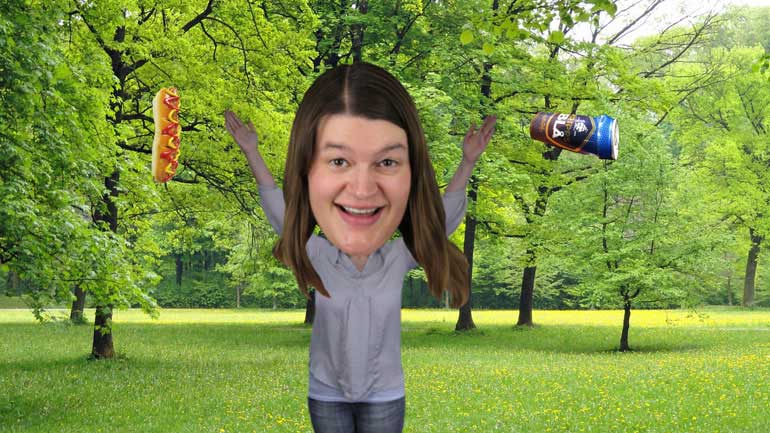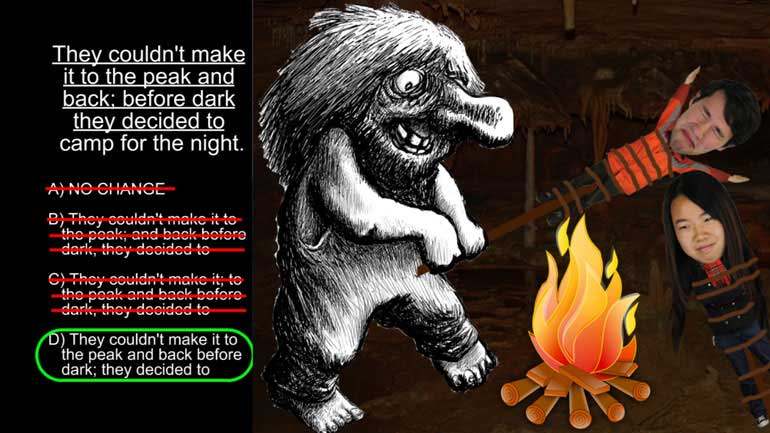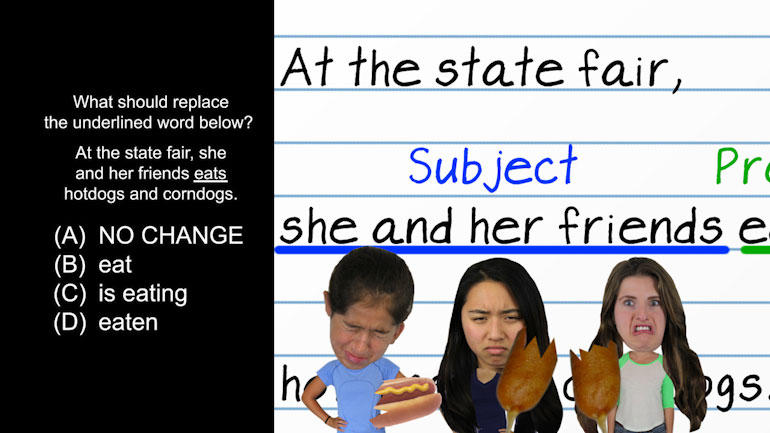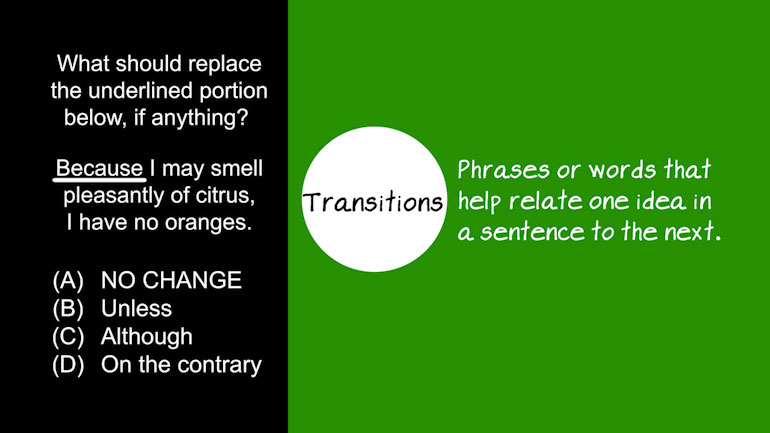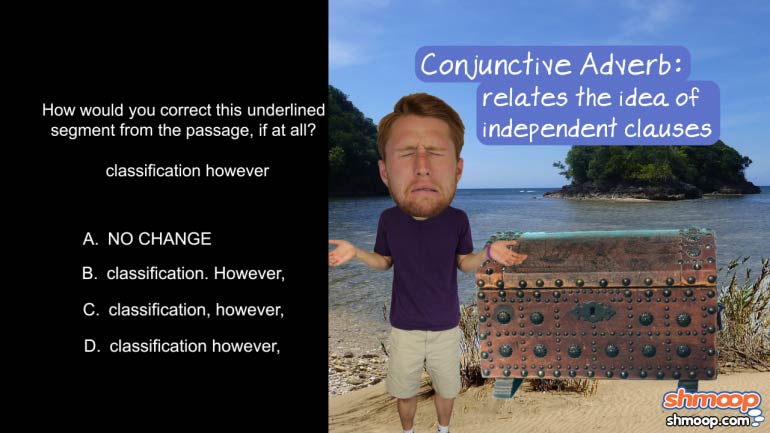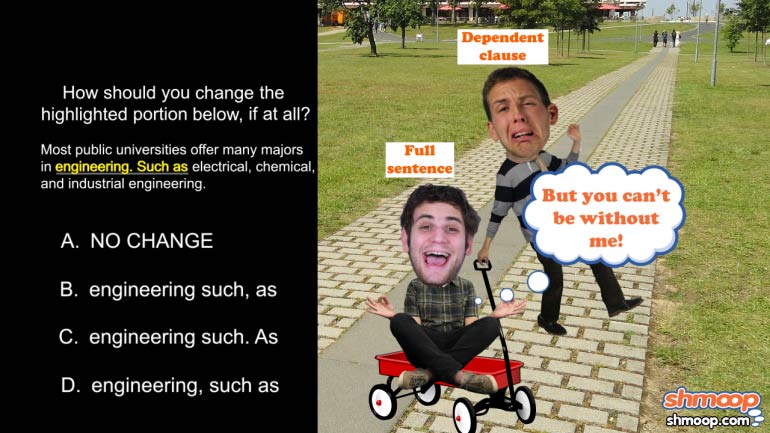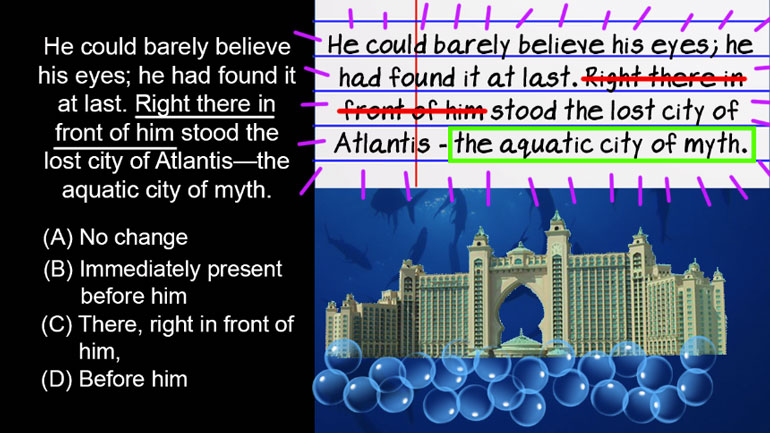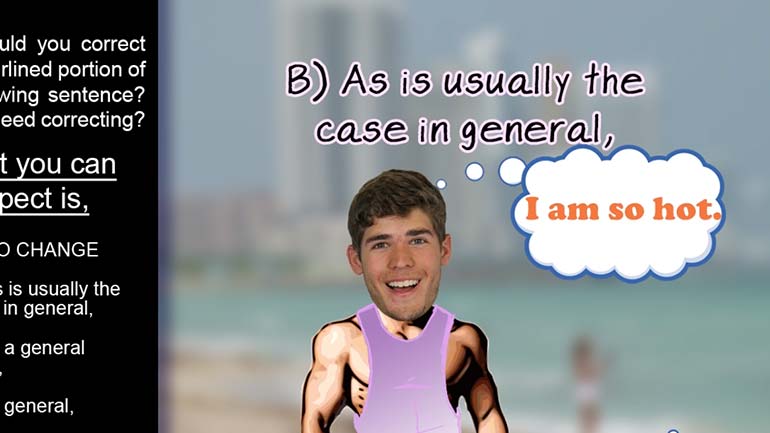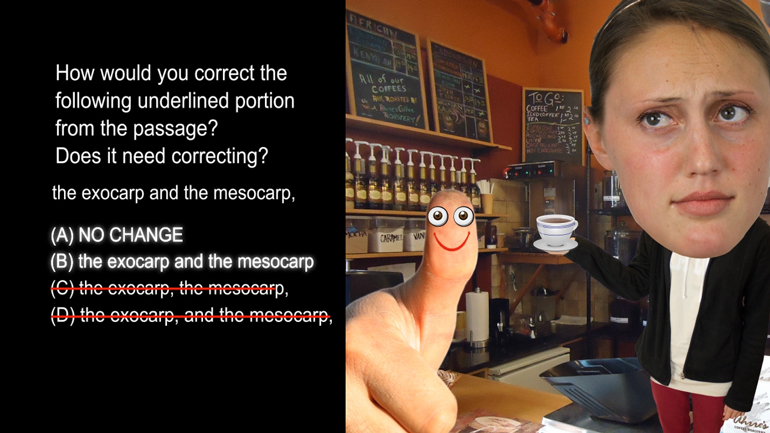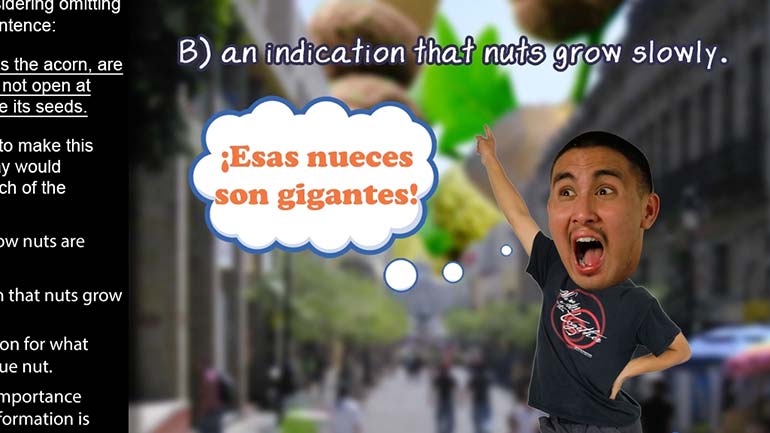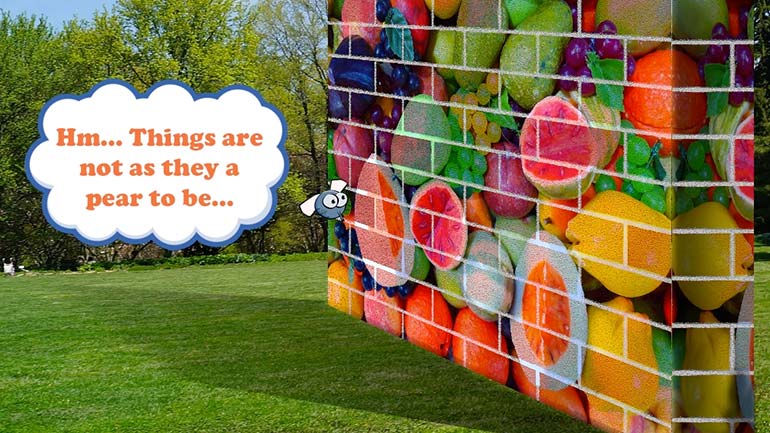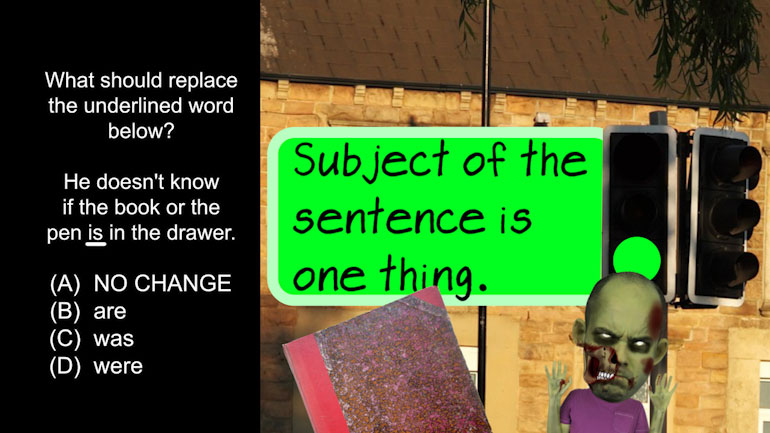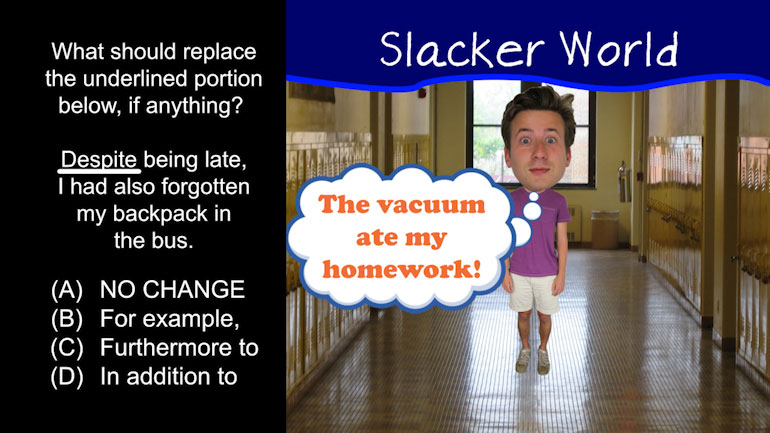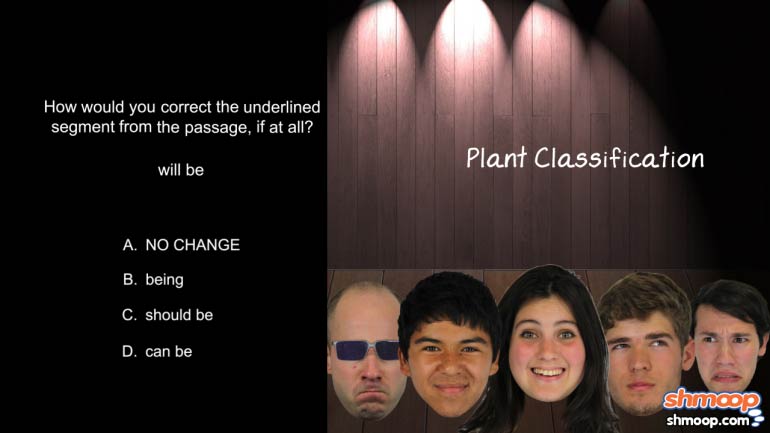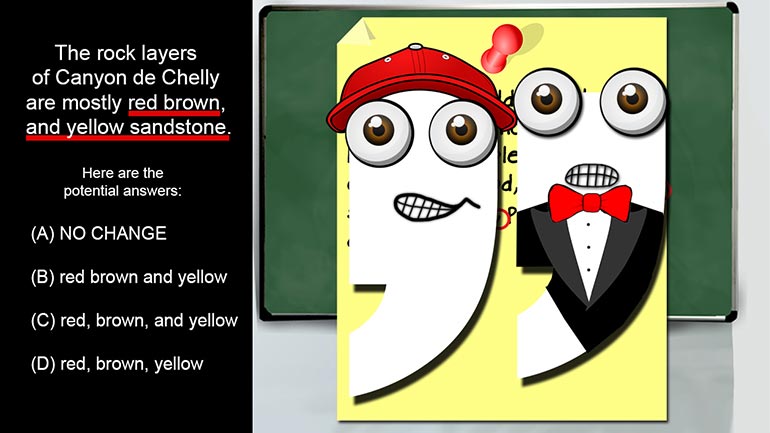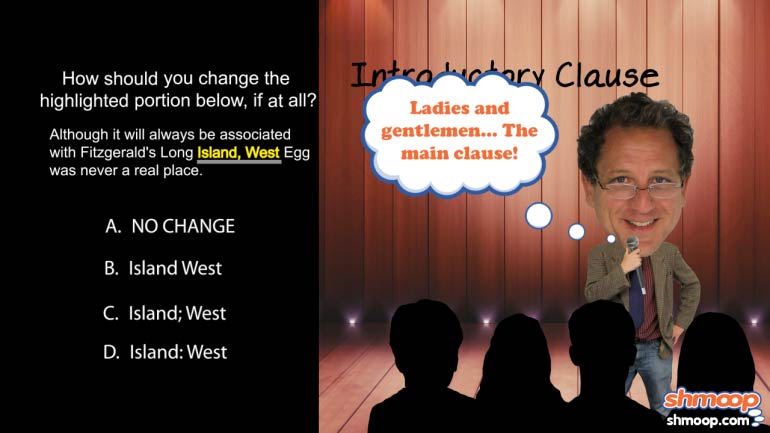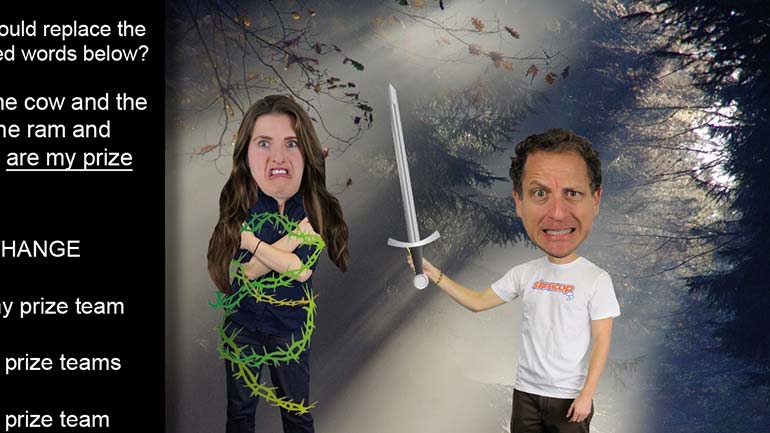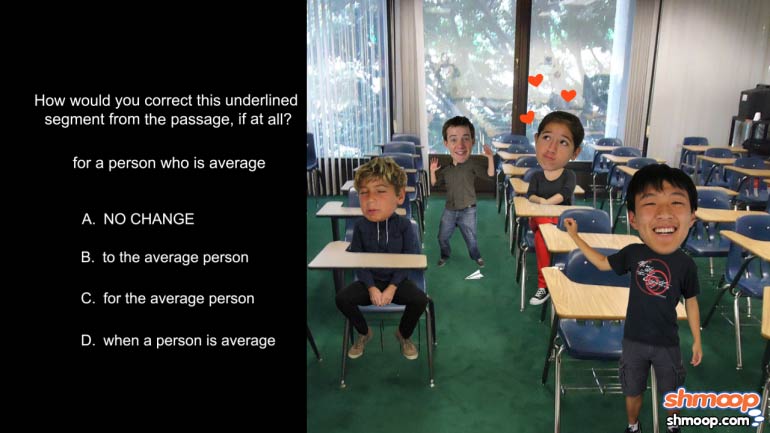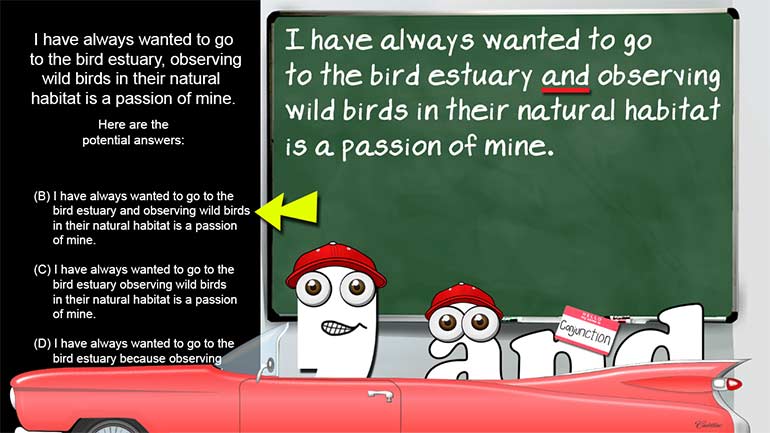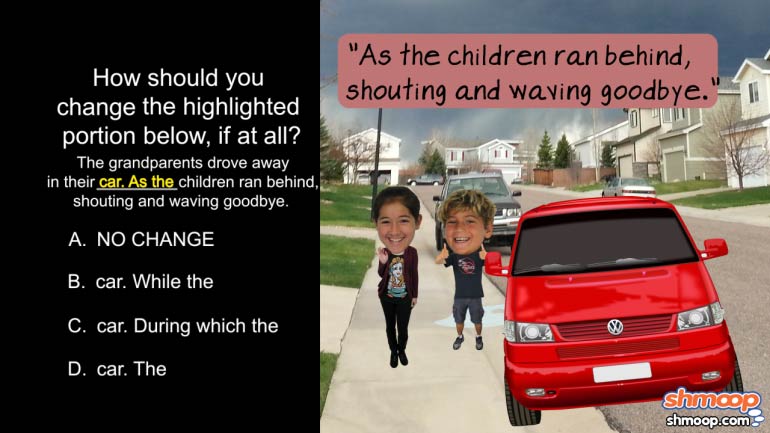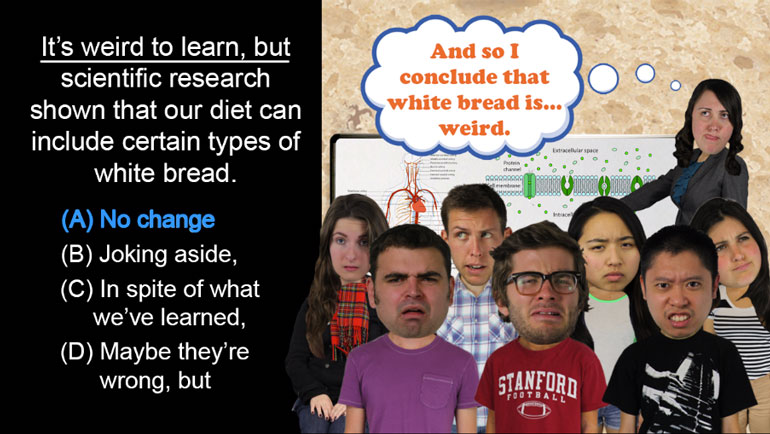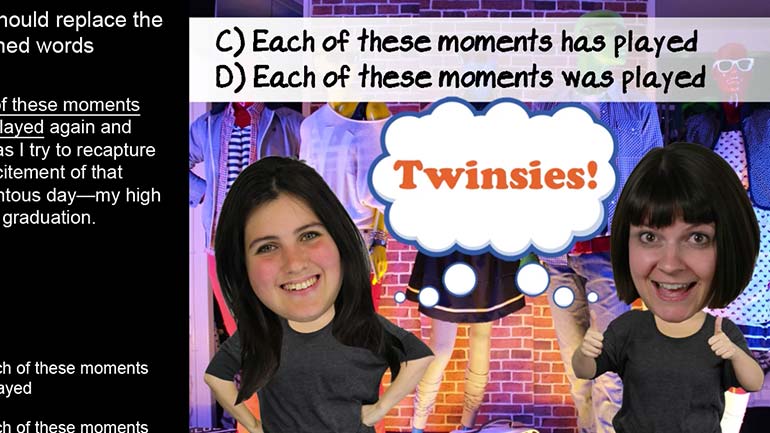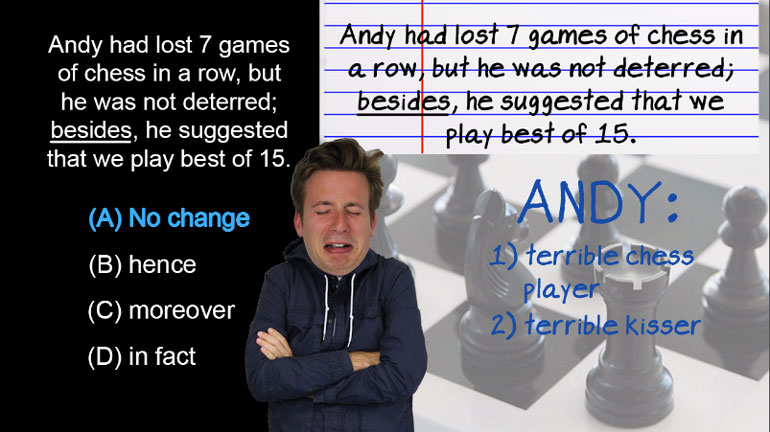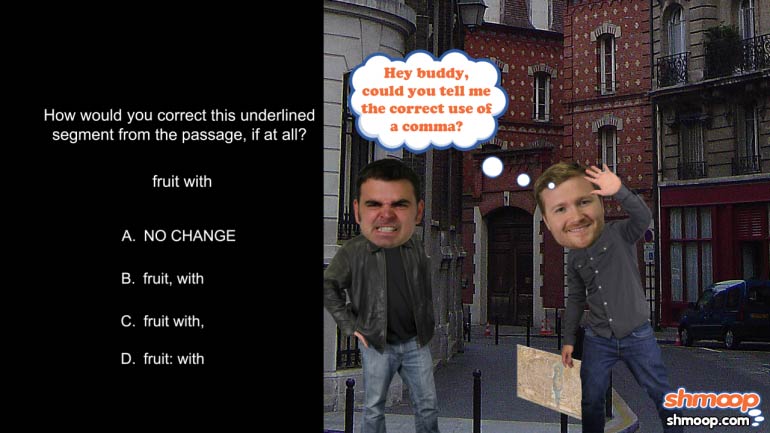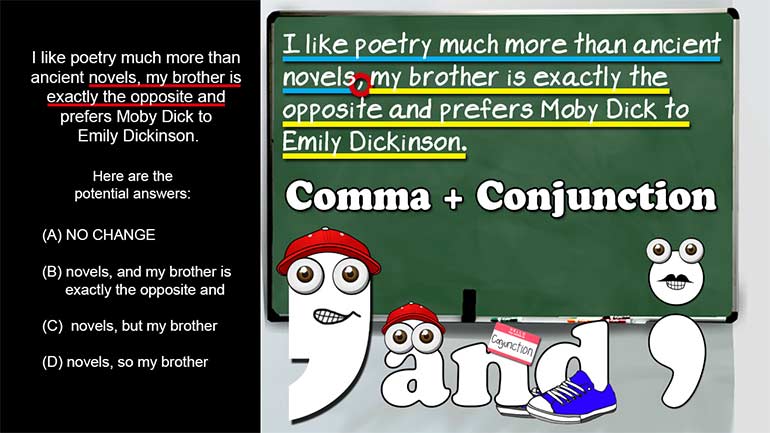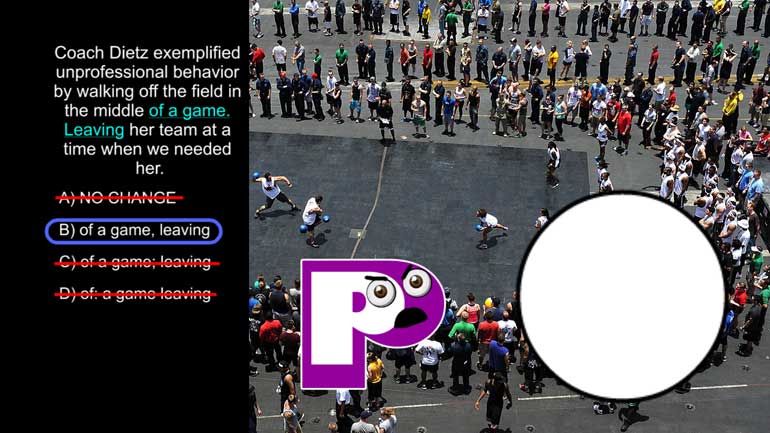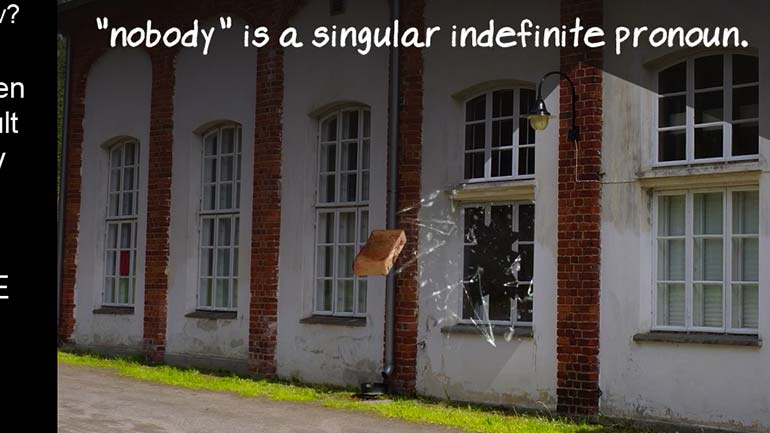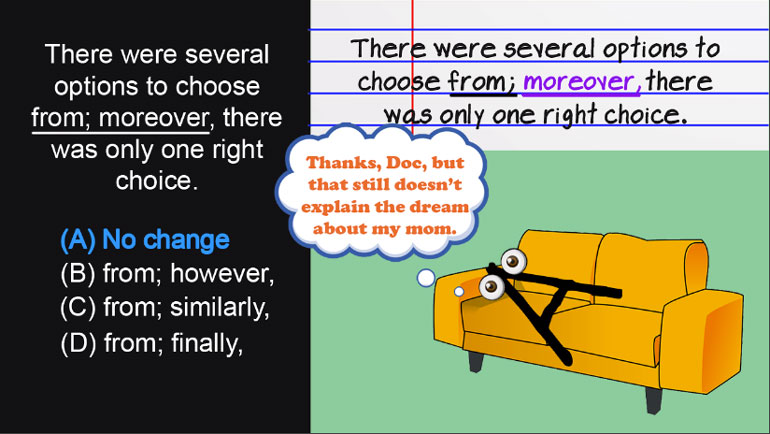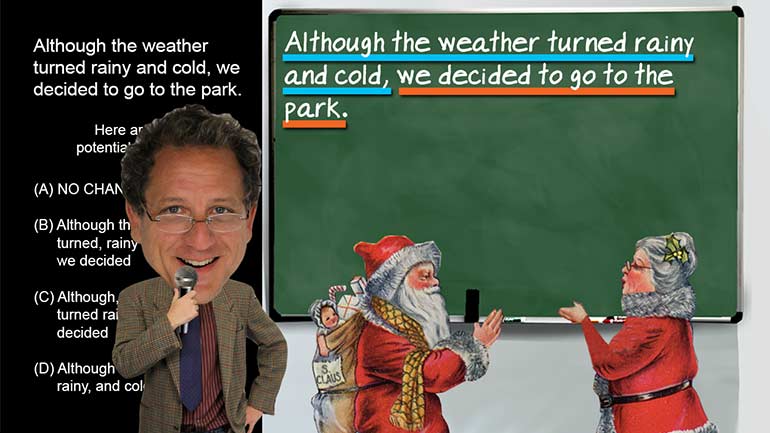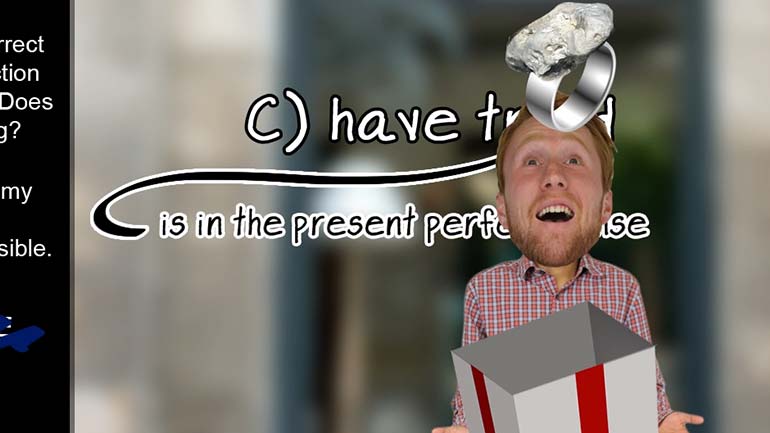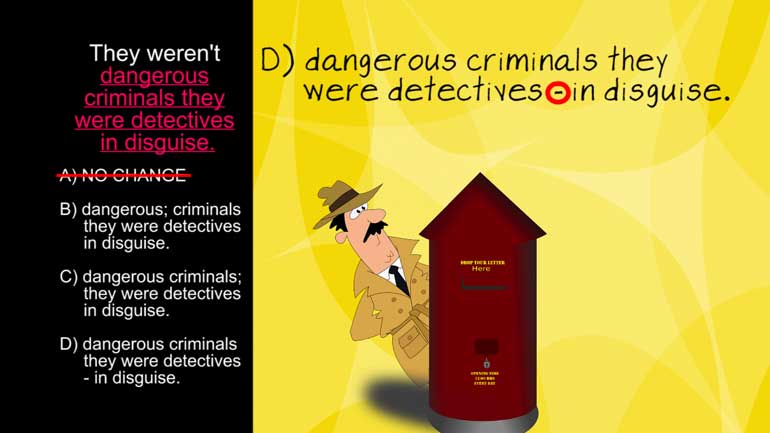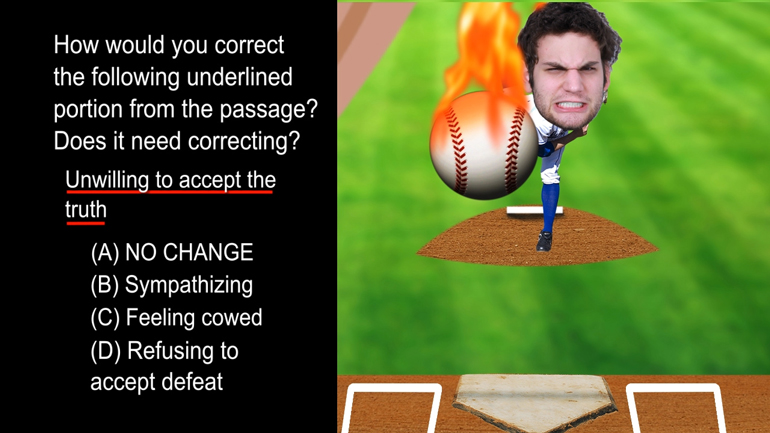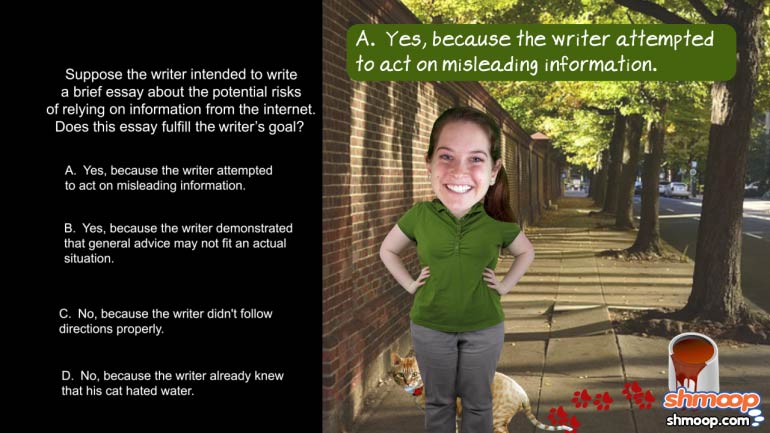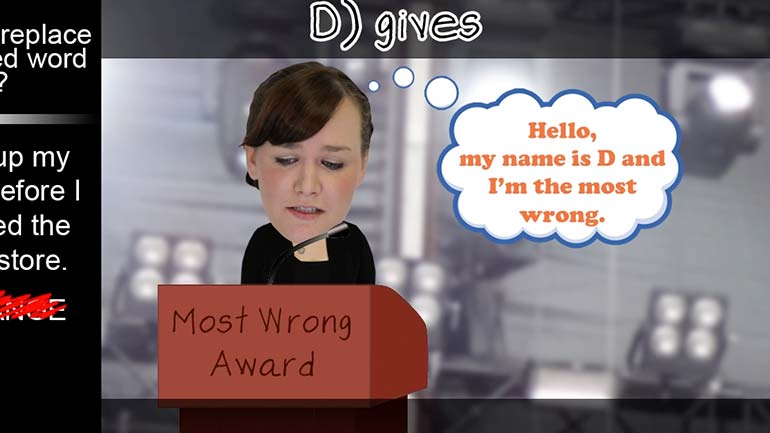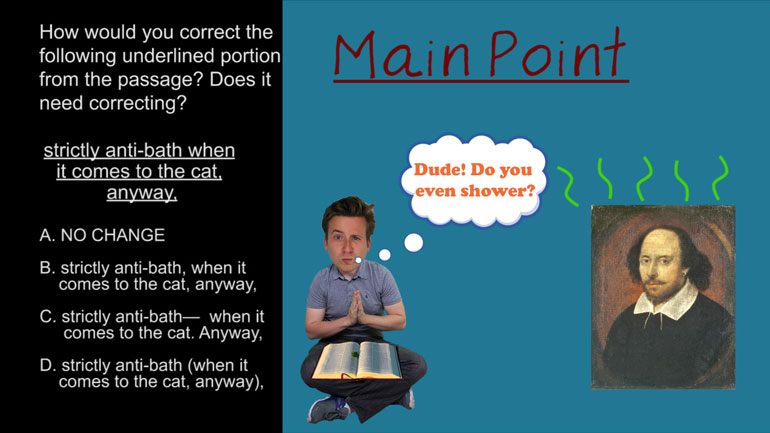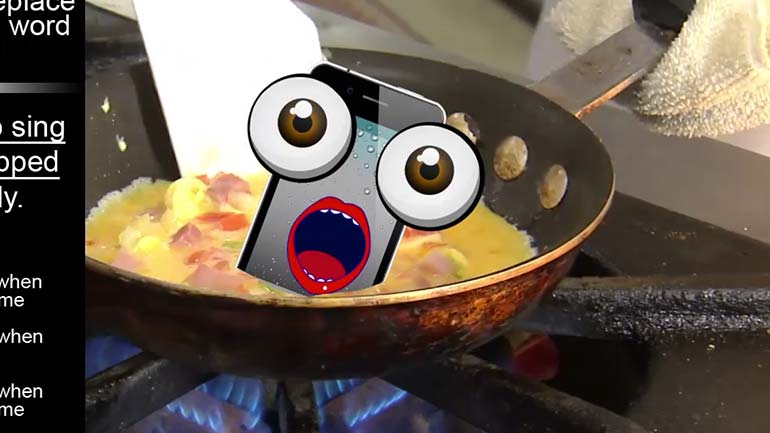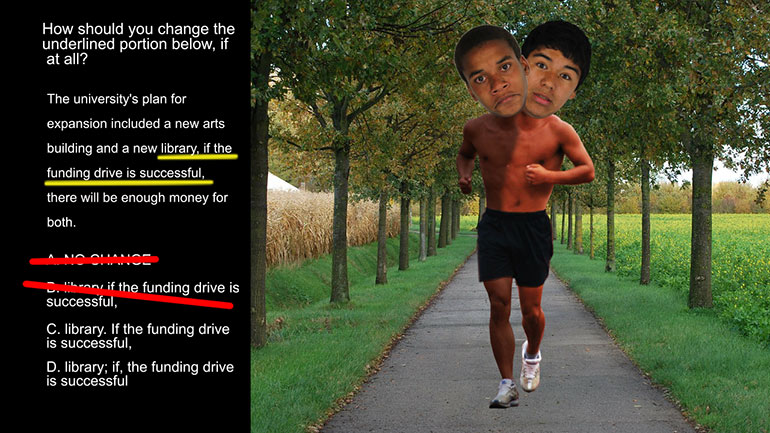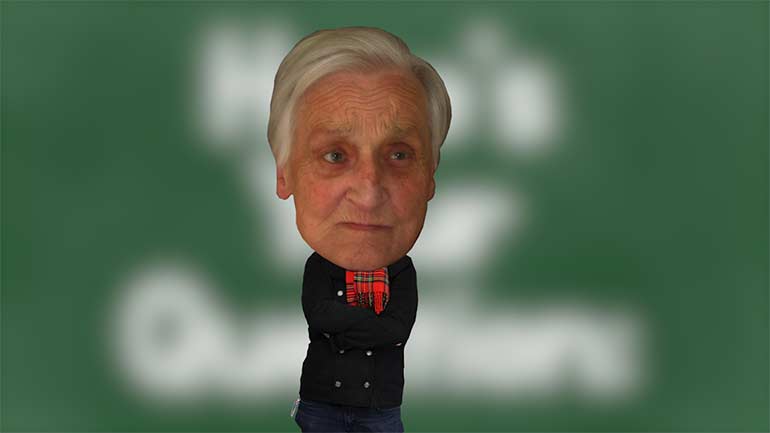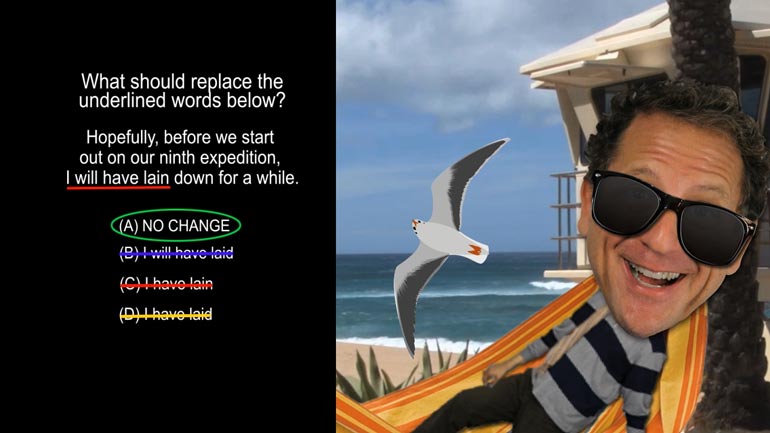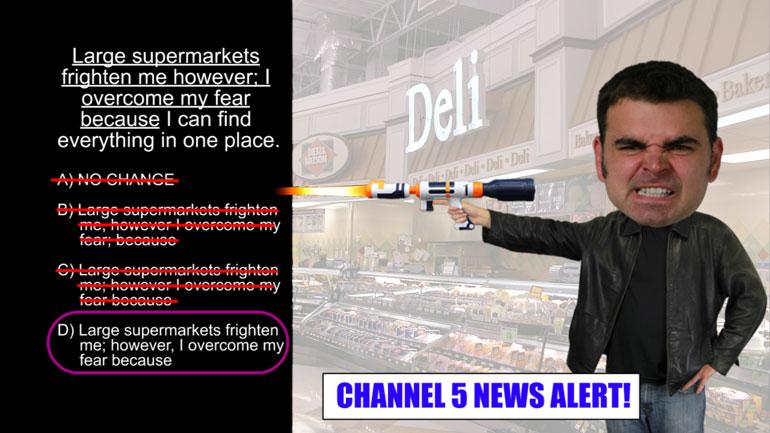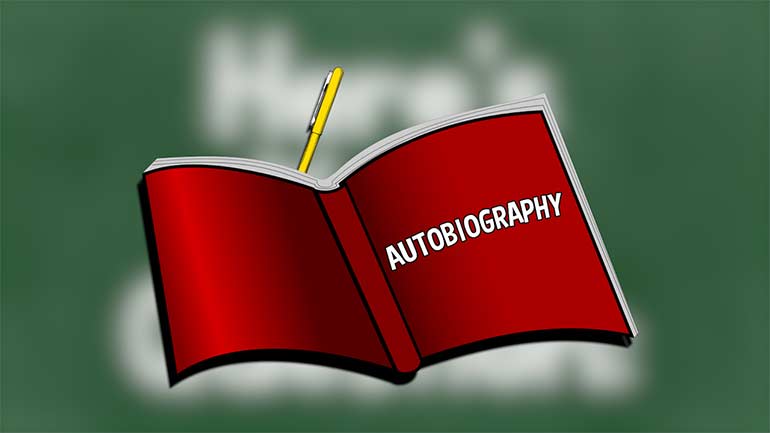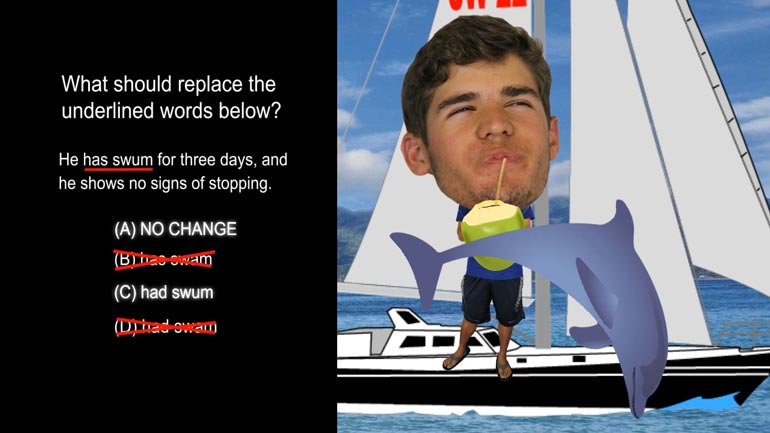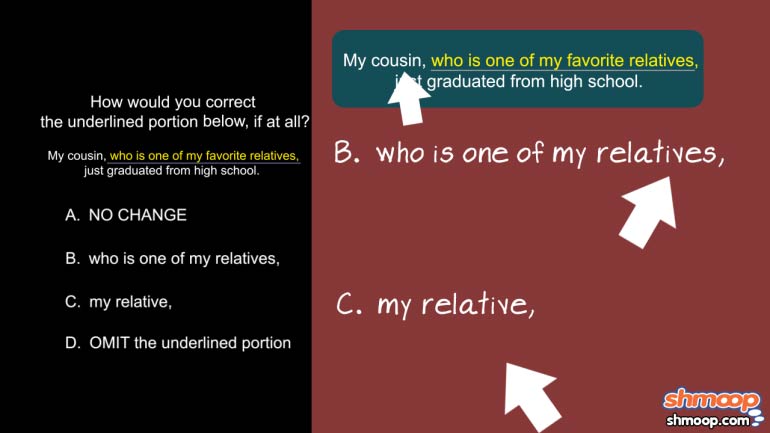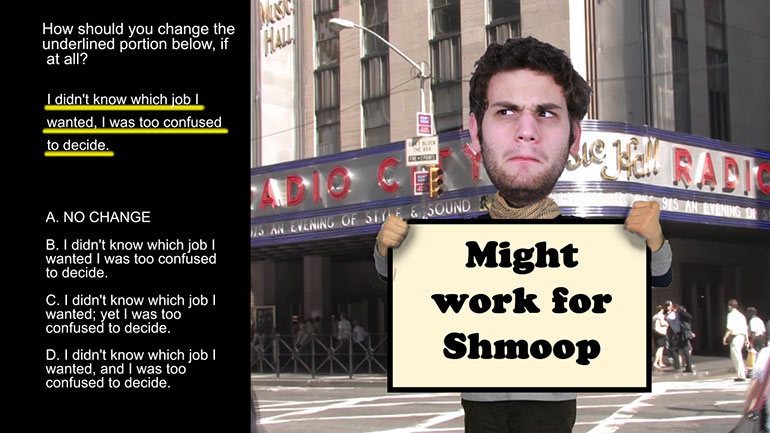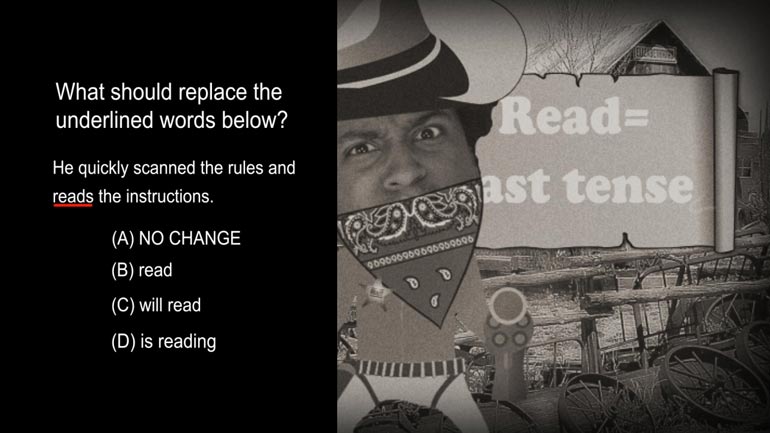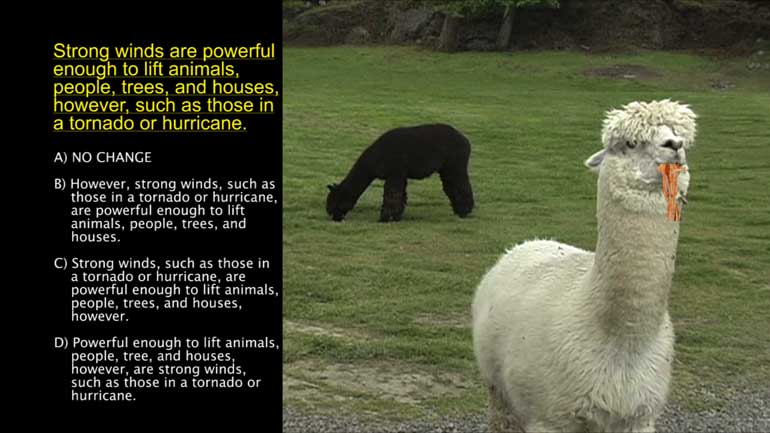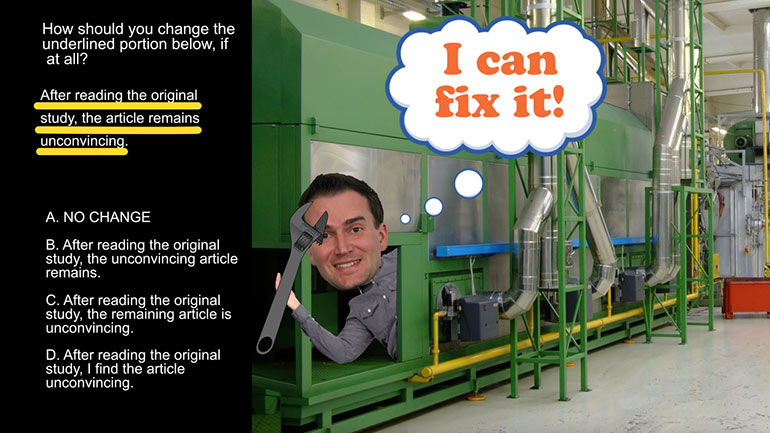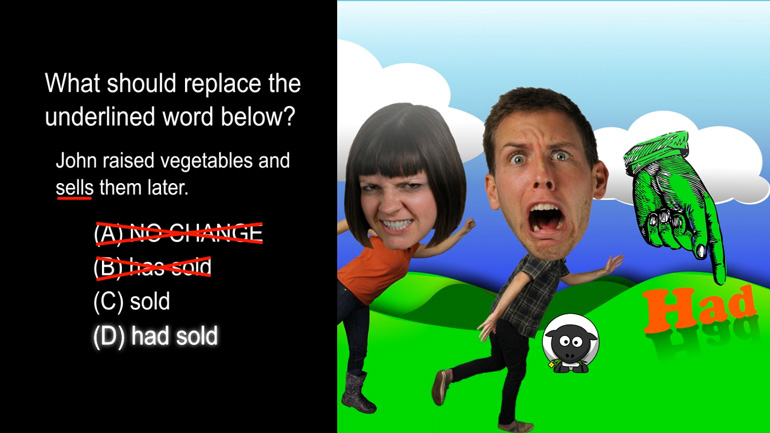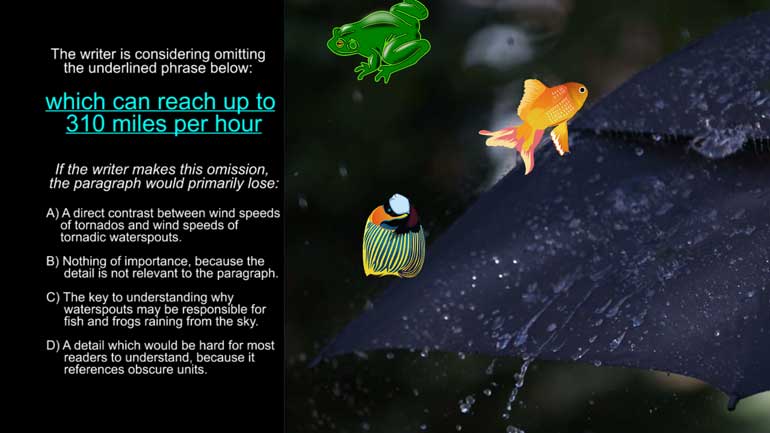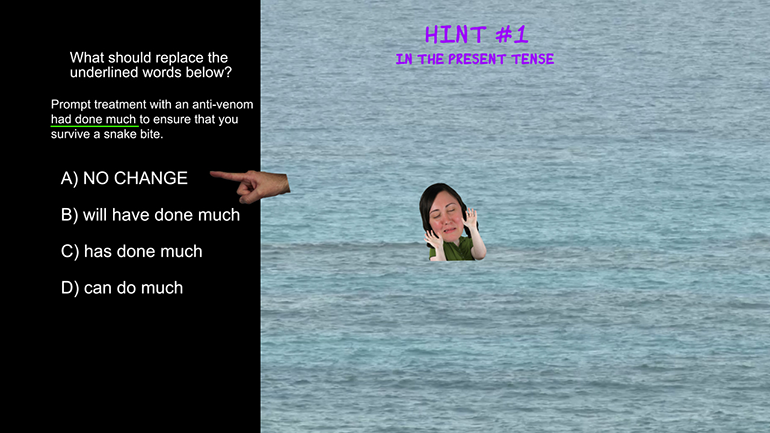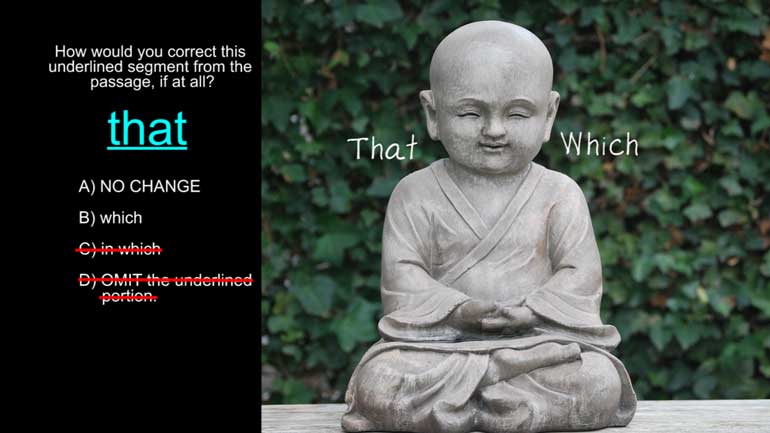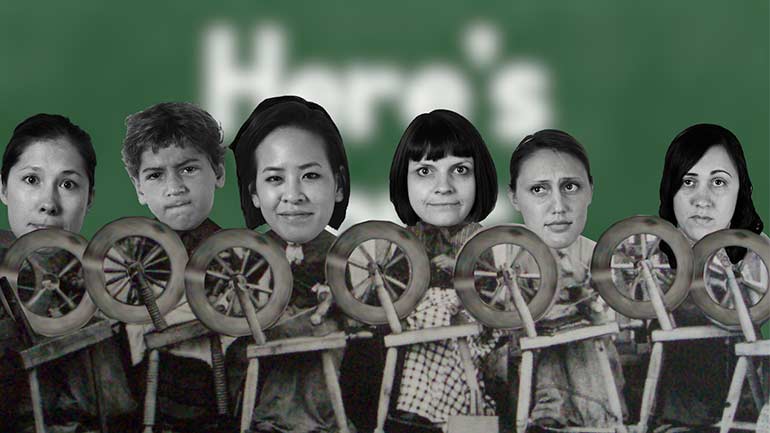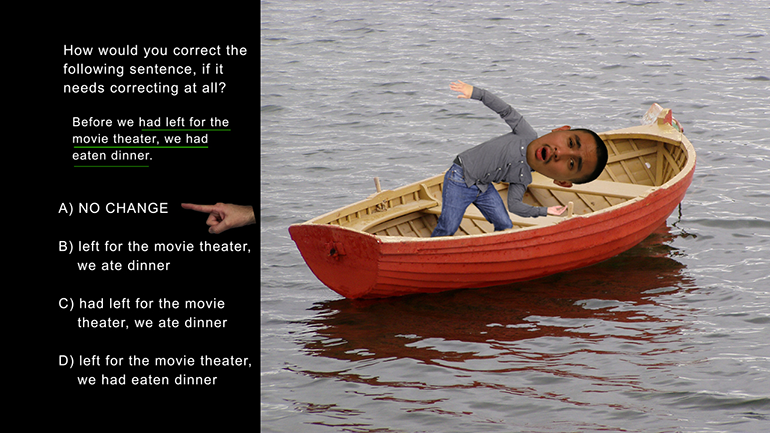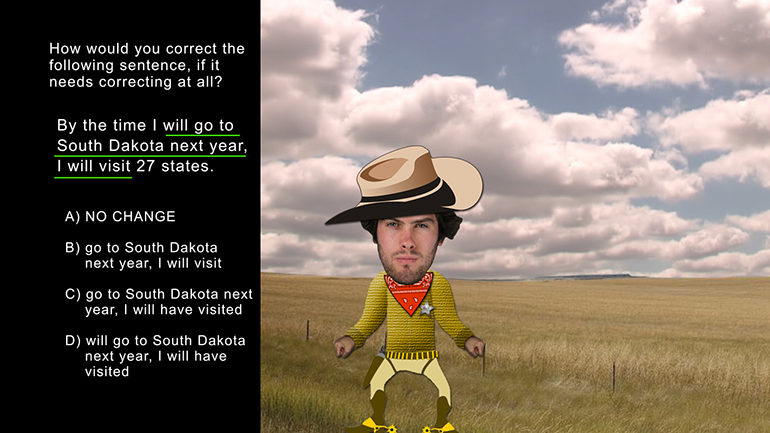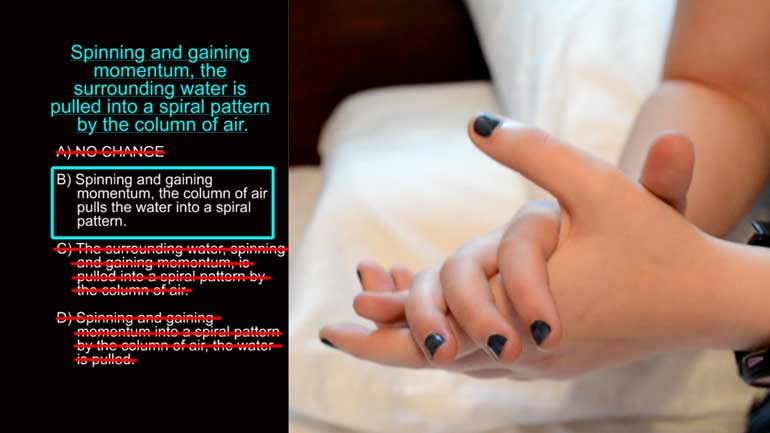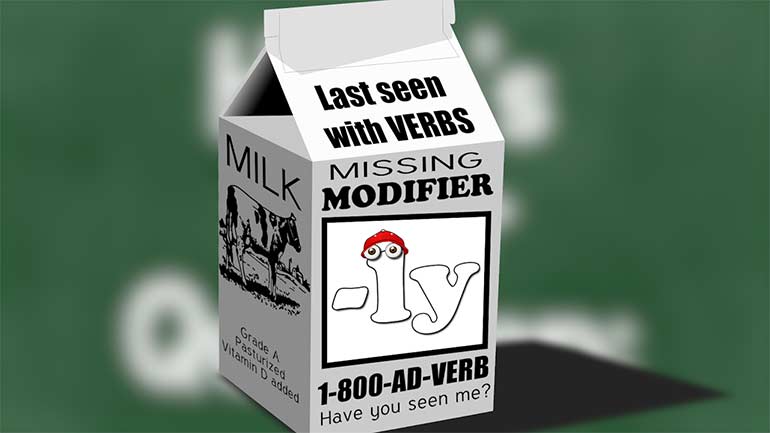ShmoopTube
Where Monty Python meets your 10th grade teacher.
Search Thousands of Shmoop Videos
ACT English Videos 157 videos
ACT English: Punctuation Drill 2, Problem 2. Where should the semi-colon be placed?
ACT English: Punctuation Drill 2, Problem 3. Where does the semicolon fit best?
ACT English: Punctuation Drill 3, Problem 1. How should this sentence be changed so that it is grammatically correct?
How to Complete the Sentence? 281 Views
Share It!
Description:
ACT English: Sentence Structure Drill 2, Problem 5. Which punctuation marks best complete the sentence?
Transcript
- 00:03
Here's your Shmoop du jour, brought to you by lawyers. So, you might want to check the
- 00:09
fine print before you sign.
- 00:11
How should you change the underlined portion below, if at all?
- 00:14
There is not much difference between entering law school and jumping into a pit of rattlesnakes,
- 00:21
in fact, you might prefer the snake pit.
Full Transcript
- 00:30
There's definitely more than one snake in this pit.
- 00:32
The phrase, "in fact," is coiled in the middle of this sentence, evilly plotting to throw
- 00:39
us off the trail.
- 00:40
See, "in fact" can sometimes function as a subordinating phrase.
- 00:45
If it were doing so here, it would turn the independent clause, "you might prefer the
- 00:50
snake pit" into a dependent one, meaning that the phrase would then not be able to exist
- 00:55
on its own anymore.
- 00:56
However, that's not what "in fact" is doing here at all. Besides acting as a subordinating
- 01:02
phrase, it can also sometimes act as an introductory phrase.
- 01:06
It does this here by setting the stage for "you might prefer the snake pit."
- 01:11
Therefore, we know that both of our clauses here are independent, and the comma that attempts
- 01:16
to connect them in the original sentence is guilty of creating a comma splice.
- 01:20
Which means we can get rid of choice (A) and move on with our lives.
- 01:23
Let's see what choice (C) has to offer.
- 01:26
Well, it does do a good job of connecting our independent clauses with a semicolon.
- 01:30
However, it messes up by not placing a comma after the introductory phrase, "in fact."
- 01:35
It's crucial, for clarity's sake, that a comma always follows any introductory phrase.
- 01:43
We can nix choice (D) pretty easily. While it does remember to put that crucial comma
- 01:47
after our introductory phrase, "in fact," it tries to connect our two independent clauses
- 01:52
with a colon.
- 01:54
Colons can connect independent clauses, but only when the second clause is an explanation.
- 01:59
Here, the second clause is more of a clarification, really, so the colon doesn't work.
- 02:04
We've now narrowed it down to choice (B), which comes through with flying colors.
- 02:08
It remembers that crucial comma after our introductory phrase, and also correctly divides
- 02:13
our independent clauses with a period.
- 02:17
For the record, we at Shmoop will take a metaphorical snake pit over a real one any day...
Related Videos
ACT English: Punctuation Drill 2, Problem 2. Where should the semi-colon be placed?
ACT English: Punctuation Drill 3, Problem 1. How should this sentence be changed so that it is grammatically correct?
ACT English: Punctuation Drill 3, Problem 2. How should we properly hyphenate the words in this sentence?
ACT English: Punctuation Drill 3, Problem 4. Which choice best formats this list of items?
ACT English: Punctuation Drill 2, Problem 1. Which choice of punctuation best completes the sentence?
